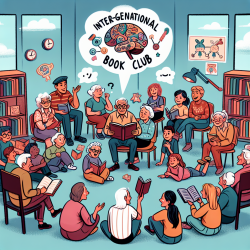Understanding Adolescent Health Risks: Insights from Kampala
The study titled "Depressive symptoms, sexual activity, and substance use among adolescents in Kampala, Uganda" provides critical insights into the factors affecting adolescent health in Uganda. As practitioners, understanding these factors can significantly improve the outcomes of interventions aimed at adolescents, particularly those at risk.
Key Findings and Implications for Practitioners
The study identifies several risk factors associated with depressive symptoms, sexual activity, and substance use among adolescents. These include:
- Chronic Illness: Adolescents with chronic illnesses are more likely to experience depressive symptoms, initiate sexual activity, and engage in substance use. This suggests a need for targeted interventions that address both physical and mental health needs.
- Poor Quality of Home Life: A poor home environment is significantly correlated with depression and sexual activity. Practitioners should consider family dynamics and home life quality when designing interventions.
- Maternal Death: Adolescents who have lost their mothers are at a higher risk of substance use, indicating the need for additional support and counseling for orphans.
- Substance Use Among Family and Friends: The presence of substance use in an adolescent's immediate social circle is a strong predictor of their own substance use, highlighting the importance of community and family-based interventions.
Data-Driven Interventions
For practitioners working with adolescents, these findings underscore the importance of data-driven, holistic approaches to intervention. Here are some strategies to consider:
- Implement screening tools that assess for chronic illnesses and mental health issues during initial consultations.
- Develop family counseling programs that address home life quality and provide support for families dealing with chronic illness or bereavement.
- Engage community leaders and schools in awareness campaigns to reduce stigma and encourage positive peer influences.
- Utilize technology, such as online therapy platforms like TinyEYE, to reach adolescents in remote areas and provide consistent support.
Encouraging Further Research
The study's findings also highlight areas where further research is needed. Practitioners are encouraged to explore the following:
- Investigate the specific aspects of home life that contribute to adolescent depression and sexual activity.
- Examine the long-term effects of chronic illness on adolescent mental health and behavior.
- Study the impact of targeted interventions on reducing substance use among adolescents with substance-using family members or friends.
By understanding and addressing these factors, practitioners can develop more effective strategies to support adolescents in Kampala and similar settings. To read the original research paper, please follow this link: Depressive symptoms, sexual activity, and substance use among adolescents in Kampala, Uganda.










